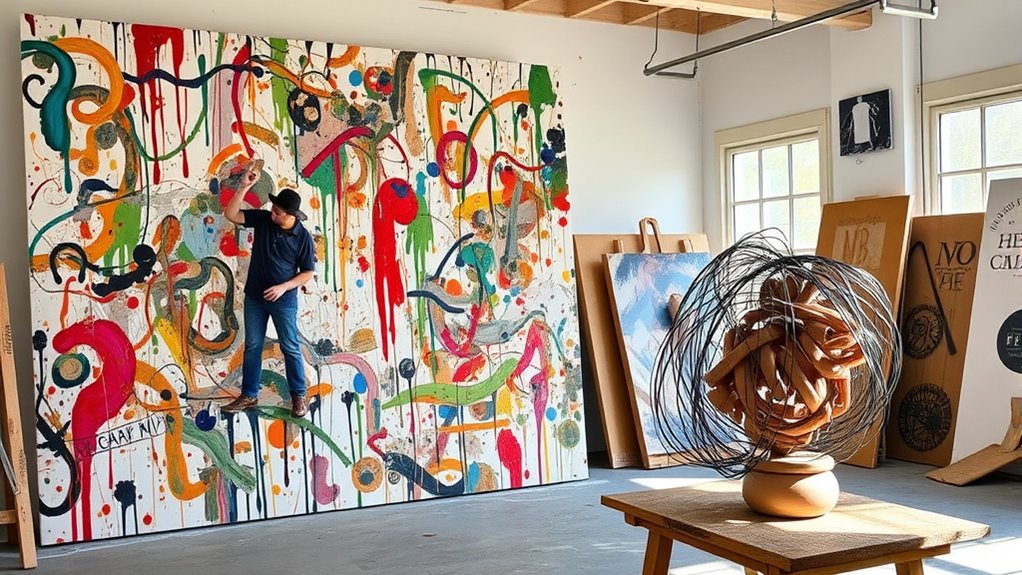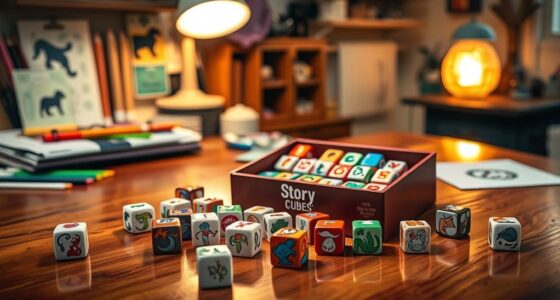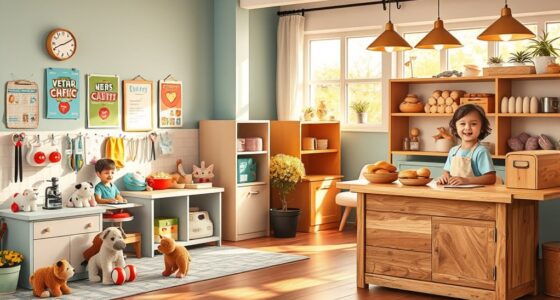When comparing process art and product art, it’s important to see how each approach values creativity. Process art emphasizes the act of making, encouraging spontaneous exploration and personal expression. In contrast, product art focuses on creating a finished piece for display or sale, often requiring precision. Understanding why the process matters helps you appreciate the journey as much as the final outcome. Keep exploring to learn how balancing both can enhance your artistic experience.
Key Takeaways
- The process emphasizes exploration, spontaneity, and personal expression, fostering authentic artistic growth.
- Product art focuses on creating a finished, polished object suitable for display or sale.
- Prioritizing the process encourages experimentation and discovery over perfection.
- Focusing on the process can reduce pressure, making art-making more enjoyable and freeing.
- Understanding both approaches helps artists align their methods with their creative goals.

When exploring different artistic approaches, understanding the distinction between process art and product art is essential. As you immerse yourself in creating, you might find yourself focusing either on the journey of making or on the final outcome. Recognizing this difference helps you appreciate the value of each approach and how it influences your creative exploration and sense of artistic authenticity. Process art emphasizes the act of making itself—how you manipulate materials, experiment with techniques, and embrace spontaneity. It’s about the experience, the tactile engagement, and allowing your intuition to guide you. When you prioritize the process, you’re free to explore new ideas without the pressure of producing a perfect or commercially viable piece. This openness fuels creative exploration, encouraging you to discover unexpected results and develop a deeper connection with your work. It’s not just about what you create but how you create it, fostering a sense of authenticity that’s true to your personal expression. Additionally, understanding auditory processing can enhance your ability to interpret and respond to sensory information during artistic activities.
On the other hand, product art centers on the finished object—the painting, sculpture, or craft that you can showcase, sell, or display. Here, the focus is on the outcome, the tangible result that represents your skill and vision. While this approach often demands precision and planning, it can sometimes limit spontaneous experimentation. However, it’s equally valuable because it allows you to develop technical mastery and produce work suitable for specific purposes or audiences. Both approaches can coexist, but understanding their differences helps you consciously choose your path. If your goal is to explore new techniques or push boundaries, embracing process art might serve you better. If you aim to craft a piece that communicates a specific message or meets a certain standard, product art becomes more relevant.
Frequently Asked Questions
How Does Process Art Influence Personal Growth and Self-Awareness?
You experience personal growth and self-awareness through process art by engaging in self-discovery and emotional expression. As you focus on creating rather than the final product, you become more attuned to your feelings and thoughts. This active involvement helps you explore your inner world, build confidence, and understand yourself better. Embracing the process lets you reflect on your journey, fostering deeper emotional insight and encouraging ongoing personal development.
What Are the Environmental Impacts of Process Versus Product Art?
Did you know that process art often has a smaller environmental footprint? By focusing on sustainable materials and reducing waste, you can minimize environmental impacts compared to product art, which may involve excess materials and waste. When you prioritize the process, you’re more likely to choose eco-friendly options, reuse supplies, and cut down on waste, making your creative practice more environmentally conscious and sustainable.
Can Process Art Be Integrated Into Traditional Art Education Curricula?
You can definitely integrate process art into traditional curricula by using assessment techniques that emphasize exploration and creativity over final products. Incorporate activities that focus on experimenting with materials, reflection, and iterative development. This approach encourages students to value the journey of making art, fostering a deeper understanding of artistic processes. By embedding these techniques, you enrich the curriculum and promote a more holistic, engaging learning experience.
How Do Audience Perceptions Differ Between Process and Product Art?
You’ll notice audience perceptions shift markedly between process and product art. With process art, viewers often value the act of creation itself, appreciating the effort and exploration involved. Conversely, product art tends to be judged on its final form, with perceptions influenced by aesthetics and technical skill. Your audience’s value interpretations change as they focus either on the journey or the finished piece, highlighting how perception shifts shape their overall appreciation.
What Are the Challenges Artists Face When Emphasizing Process Over Product?
When emphasizing process over product, you might face creative resistance, like skeptics questioning your focus on the journey rather than the final piece. For example, an artist experimenting with abstract sculpture could encounter audience misunderstanding, perceiving it as unfinished or chaotic. This challenge requires you to communicate your intent clearly and stay true to the process, despite critics valuing polished results. Balancing concept with perception becomes a key hurdle.
Conclusion
Ultimately, embracing the journey behind your art reveals more than just the final piece. While product art may catch the eye, it’s the process that truly touches the soul and offers deeper meaning. By valuing your creative flow, you open doors to unexpected discoveries and personal growth. Remember, sometimes the most subtle moments in your artistic process hold the greatest beauty, inviting others to see the magic that unfolds when you focus on the journey rather than just the destination.










